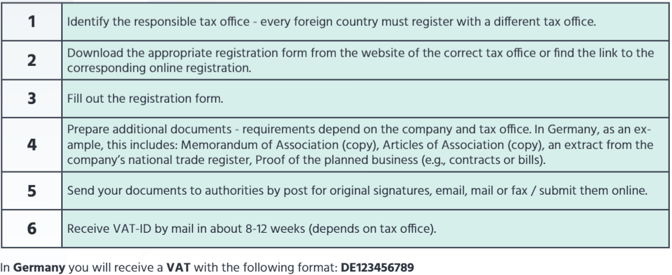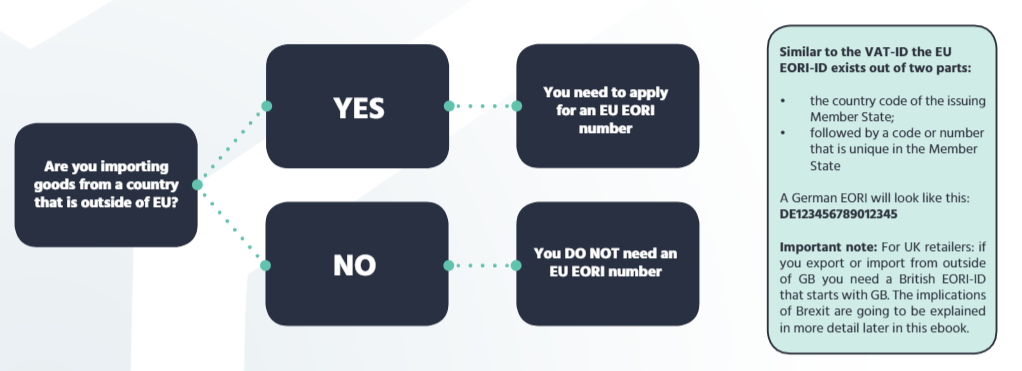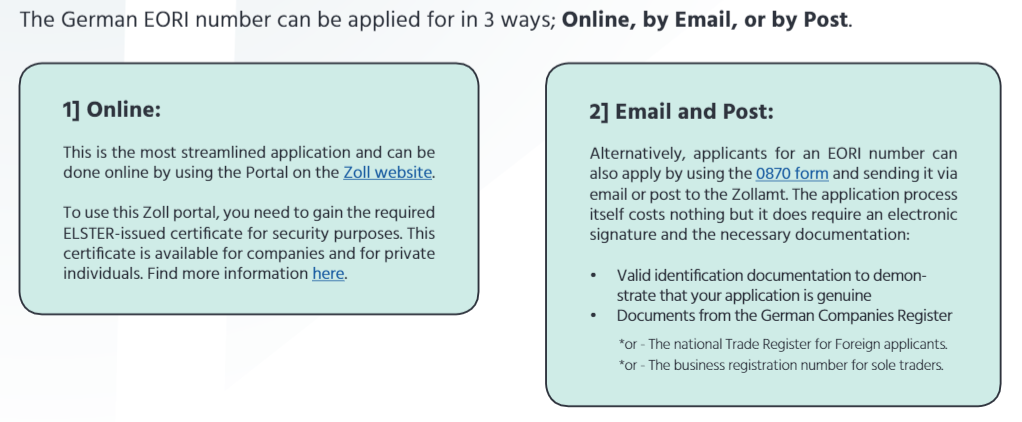Expand your E-Commerce Business into Europe
Table of Content
Looking to grow beyond North America? Expanding into Europe not only unlocks access to a growing e-commerce market, but also offers a smart way to navigate today’s challenging trade landscape.
With rising U.S. import tariffs and looming EU retaliatory duties, many U.S. merchants are rethinking their supply chains. For some, producing goods in China and shipping directly to the EU for fulfillment has become a cost-saving strategy.
By partnering with a European third-party logistics (3PL) provider, you can store and fulfill products within Europe, bypassing tariffs, cutting shipping times, and ensuring compliance with local regulations. In this article, we explore why expanding into Europe makes sense now more than ever, covering key success factors, potential obstacles, and expert tips for a smooth transition.
Expanding into the European market offers access to 27 EU countries, plus additional opportunities in non-EU nations such as the UK, Switzerland, and Norway. With European e-commerce projected to reach 958 billion Euros ($1.05 Trillion) in 2024, this growth represents a dynamic, high-potential market that still has room for new entrants.

Key Markets and How to Approach Them
Europe's e-commerce strength is driven by the diversity and purchasing power of its markets. While major players like the UK, Germany, and France dominate, smaller markets such as the Netherlands, Spain, Italy, and Poland also present significant opportunities.
Additionally, key cities across Europe play a pivotal role in the world of fulfillment. Here are some notable examples:
- Barcelona, for example, has a major port that facilitates the entry and distribution of products throughout Spain, Andorra, and Portugal.
- Milan, located in northern Italy, is renowned for its highly competitive market, with a wide range of companies offering online products and services.
- Amsterdam, the capital of the Netherlands, is another strategic city, situated in the heart of Europe. Its excellent logistics infrastructure - connected by roads, rail, and canals—makes it a key logistics hub for e-commerce businesses, ensuring efficient transport and distribution of goods across the region.

Step 1: Navigate Compliance, VAT, and Tax Regulations
Entering the European market has its advantages, but addressing several critical factors from the outset is essential. So let's dive into everyone’s favorite topic—taxes, rules, bureaucracy, and all those thrilling numbers! Not the most exciting stuff, we know, but it’s gotta be covered. So, here we go!
1. Compliance & VAT Regulations
If you are storing goods in an EU country, it is important to know that the movements of goods to the warehouse across borders (so-called intra-community movements and intra-community purchases) need to be declared to the respective local tax offices. That means that local VAT registrations are required in the country of the warehouse to which you are delivering your goods.
How to apply for VAT-ID?
In most EU countries you can apply for a VAT-ID by post or online. The deadlines, waiting times, and the detailed process for VAT registration vary across countries. Nevertheless, in the following, we give a brief overview of the steps you need to consider:

EORI-ID
Equally important when storing your products in the European Union, is the EORI-ID. It is a must-have for any business that is dealing with customs procedures by importing or exporting goods and serves as a unique identification number. Other than the VAT, a single EORI-ID for importing into the EU is sufficient to serve all countries.
That means that when you start your operations in Germany only, for example, expanding to the Netherlands, Spain, or any other EU country won’t be any more hassle regarding your EORI-ID.

Here’s how you can request an EORI Number
By securing your EORI number, your business will be authorized for efficient cross-border transactions within the EU. For example, here you have the German EORI number steps:

More information about the IOSS (Import One-Stop-Shop), customs form, and similar, can be found in our Cross-Border Whitepaper.
2. Product & Labeling Compliance
European markets have stricter regulations, especially for products like vitamins, supplements, and cosmetics. Be sure your products comply with EU standards for:
- Product and online labeling
- Marketing and advertising restrictions
- Required certifications (e.g., CE mark for electronics)
GDPR Compliance: Privacy laws in Europe are more stringent than in North America. Ensure your data collection practices are GDPR-compliant to avoid fines and protect customer trust.
3. Localized Marketing Strategies
Launching a successful marketing campaign in Europe requires an understanding of the marketing strategies. Here’s how to tailor your strategy:
- Search Engine Advertising (SEA): Google dominates with over 93% market share, but European CPC rates are significantly lower than in the U.S. Use this to maximize your reach at a lower cost.
- Social Media: While platforms like Instagram and Facebook are universal, European audiences are less active on Twitter and TikTok than their American counterparts. Adapt your approach based on local platform popularity.
- SEO: Invest in SEO to build a sustainable, cost-effective marketing channel. Localized keywords and country-specific domains (like .de for Germany) can boost your visibility in specific regions.
Step 2: Understanding European Customers
It is also worth noting that cultural differences can play a big role in the success of your expansion plans. Therefore, when you are choosing the path of entering the European market with your online shop, make sure to be aware of the characteristics of the potential customers you are trying to sell to.
For this reason, in this section of the article, you'll find a brief analysis of the European market, providing a tailored summary that can be valuable for your online business.
Top Parcel Delivery Companies and Preferences in Europe
The popularity of carriers varies greatly by country, which makes it essential to know the most trusted delivery companies in Germany, the UK, France, Spain, Italy, and the Netherlands. Many Europeans have a strong preference for and trust in, their local delivery companies, so aligning with these preferences can significantly impact customer satisfaction and increase sales.
Each country has its preferred parcel carriers and shipping methods, so it’s important to align with these local preferences. Doing so will help improve customer satisfaction and increase conversion rates, ensuring your business runs smoothly and efficiently across European markets.
- France, Netherlands, and Italy prefer home delivery.
- Poland favors parcel locker pickups.
- Germany has a high preference for invoice payments, while card payments dominate in the UK and Spain.

Overcoming Language Barriers to Boost Sales in Europe
Language barriers are a major hurdle to making sales. Language goes beyond words; it's a reflection of culture and identity, and simple translations often miss key nuances. For e-commerce businesses, building trust quickly is essential to encourage visitors to make a purchase.
While many Europeans understand some English, 75% prefer to shop in their native language. With 24 official languages in the EU, it's important to prioritize wisely. Also, displaying prices in local currency is crucial, as using a foreign currency can drive potential customers away.
Choosing the Right Marketplaces
While Amazon remains a go-to marketplace, Europe has several regional platforms that offer strong visibility and customer reach:
- Germany: Zalando, OTTO
- France: Cdiscount
- Netherlands: Bol.nl
- Poland: Allegro
Many European companies are opting to create independent online stores to avoid high marketplace fees and to retain more control over branding. Platforms like Shopify and WooCommerce make it easier than ever to launch your store, offering advantages in branding and customer loyalty.
Tailoring Payment Options for European Markets
European consumers have distinct payment methods and aligning with these preferences is essential for success in each market.
- Germans heavily favor Girocard payments (a national debit card system), which are used by around 95% of consumers.
- Credit and debit card payments dominate in the UK, with many consumers accustomed to using Visa, Mastercard, and American Express.
- In these Southern European countries, cash on delivery has historically been a common choice, although digital payments and credit cards are gaining ground rapidly.
Successful European Expansion Starts with Strong Logistics
Why Do Expansions Fail? The primary reason is logistics. Partnering with an experienced European 3PL can prevent many common logistical challenges. Companies like byrd offer:
- Warehousing across major European markets for faster delivery.
- Full-service logistics, including VAT management, so you can focus on brand growth.
Expanding into Europe presents significant opportunities, but success requires careful planning, market adaptation, and logistical readiness. From VAT compliance to understanding consumer preferences, a strategic approach ensures a smooth entry and lays the foundation for long-term growth.
What sets byrd apart from other 3PL providers is its deep expertise and focus on the European market. With warehouses located across key European countries (including the UK, Germany, France, Netherlands, and Austria), byrd enables you to fulfill orders from nearby locations, reducing delivery times and costs while providing more eco-friendly shipping options.

